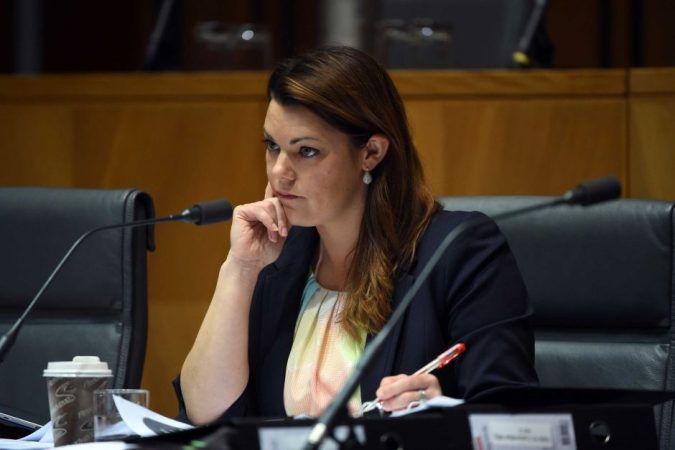Inquiry’s bumpy ride awaits, after tech giants’ “blackmail” tactics

As the Senate inquiry into the Digital Media Code began on Friday, Greens senator Sarah Hanson-Young has expressed her displeasure over the lack of negotiating spirit Facebook and Google have brought to the halls of Parliament in Canberra.
In fact, after Day 1’s proceedings were completed, Hanson-Young, in her role of chairing the Senate inquiry, gave the Silicon Valley tech media giants an almighty serve in response to their testimonies.
Hanson-Young even went as far to express that their tactics of sticking to their own principles threaten an essential pillar of democracy in Australia, that of a free press.
And Hanson-Young, in return, has shown the Senate inquiry’s challengers that she is ready to wage a toe-to-toe battle, or even a bumpy ride, to fight for better journalism in Australia.
“We know that Australians value good quality journalism in this country. And in order to make good quality journalism in this country sustainable [to this point], we’ve needed to pay for it,” Hanson-Young said after the opening day’s formal presentations.
“The tech giants have been getting away with it for far too long, and with very little regulation, and one of the results is that journalism in this country is suffering,” she added.
Moreover, Google – through testimony and statements provided by Mel Silva, its managing director in Australia and New Zealand – has threatened to geo-block its services to Australian users should the Digital Media Code Bill come to fruition.
“The principle of unrestricted linking between websites is fundamental to search and coupled with the unmanageable financial and operational risk,” Silva said.
“If this version of the code were to become law, it would give us no real choice but to stop making Google Search available in Australia.
“This is our worst-case scenario, we do not want to be in this situation, we would love to get to an outcome where there is a workable outcome for all parties,” she added.
Meanwhile, Hanson-Young views Google’s position as a devious negotiating tactic equivalent to holding Australian users over a barrel.
“We are going through elements of the legislation, and there may be elements that need to be tweaked,” Hanson-Young admitted, in fairness.
“But I’ll tell you what – you don’t walk into the Australian Parliament, even if you’re among the biggest companies in the world, and especially if you’re not paying tax in this country, and blackmail the Australian Parliament and expect to get your way,” she added.

Greens senator Sarah Hanson-Young, holding tech giants to account in chairing an inquiry into the Digital Media Code Bill (Photo from abc.net.au)
Silva said during the opening day’s testimonies that Google has a history of negotiating with other countries to cut deals and bring about compromises with media companies and news publishers where the latter groups get financially compensated but at rates that are suitable to them.
“There is, however, a workable solution for Google where we would pay publishers for value, they would create and curate content and panels that would exist across several Google services. These are deals that have been done all around the world, 450 so far,” said Silva.
Meanwhile, Facebook has adopted a similar stance to that of their Silicon Valley tech neighbours, also threatening to cease with publishing links and stories from Australian media providers upon passage of the Digital Media Code.
If this exists as a virtual case of Facebook unfriending Australian content consumers, Simon Milner, vice president of public policy at Facebook, sees it as his company’s unwavering corporate policy.
Milner told the inquiry that his company had three concerns about the proposed legislation and that a possibility of a series-circuit or daisy-chain effect could ensue, starting with the mandating of commercial arrangements with every Australian media publisher.
“The sheer volume of that we regard as unworkable,” Milner maintains, in defence of Facebook’s position.
Milner also says that his company has issues with the nature of negotiations between parties as being one of binding arbitration versus an open system of good faith negotiations, leading to a non-differentiation clause.
That clause essentially means that prevents one of the tech companies, such as Facebook, from offering commercial terms to certain publishers and changing how content is displayed regardless of whatever deals have been agreed to or not.
“It means if one publisher is out, [then] all Australian publishers are out,” Milner said.
Hanson-Young rejects the notions of the tech giants, seeing their positions as untenable towards the big picture of striking fair deals for Australia’s media companies.
“If you ever needed an example of what big corporate power looks like, this is it,” Hanson-Young said.
“This is a failure of the market – and it’s about time that we regulate big tech, and it’s about time that we ensure that big corporations do not continue to have such a stronghold over democracy,” she added.
At present, amounts of collective remunerations have been debated, although those in the mainstream press – such as Nine chairman Peter Costello and News Corp Austral-Asia CEO Michael Miller – have bandied about $600 million to $1 billion as being the appropriate figures.
With the inquiry is set to continue this week, Hanson-Young said that while negotiations between the government and the tech giants may be inevitable, the Digital Media Code is a much-needed element of overall media reform, and possesses a far-reaching impact.
“The way we ensure that is to ensure that all of this country’s outlets, no matter whether it’s The Guardian, the Sydney Morning Herald, or any of the local country newspapers, the ABC, the public broadcasters, that their content created by those journalists and media agencies is actually paid for,” Hanson-Young said.
“These big tech giants have been taking this content, and using it as a part of its business model to make big profits from it for far too long.
“It has to change,” she added.
Also by William Olson:
Unemployment down, but recovery still way off: ACTU
MEAA issues wish list over proposed media reforms
Porter’s bills may sink BOOT into penalty rates, warns Burke
Like what we do at The AIMN?
You’ll like it even more knowing that your donation will help us to keep up the good fight.
Chuck in a few bucks and see just how far it goes!
Your contribution to help with the running costs of this site will be gratefully accepted.
You can donate through PayPal or credit card via the button below, or donate via bank transfer: BSB: 062500; A/c no: 10495969










